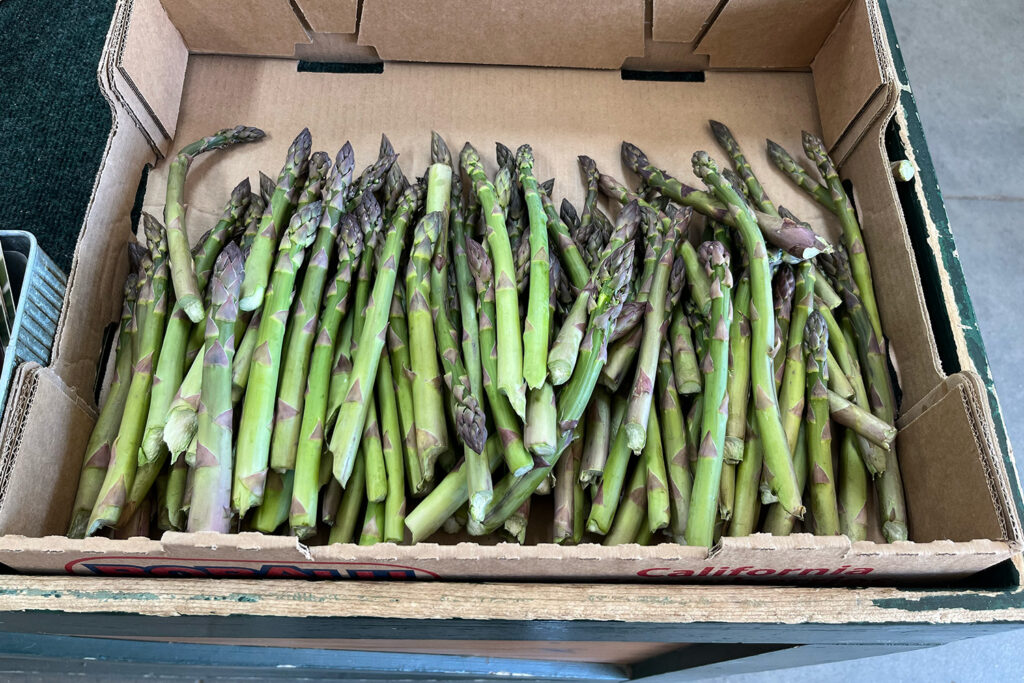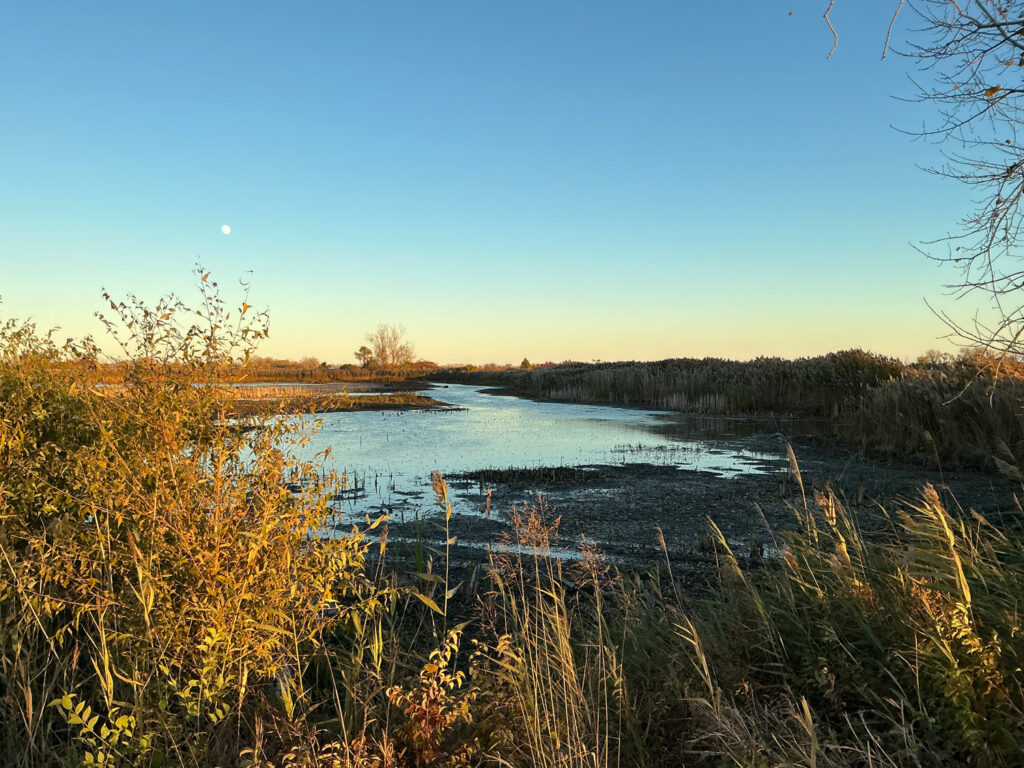Oceana County — Well known for the perfect camping around Silver Lake, the pristine local beachfront and clear inland lakes of Oceana County harbor some of the most popular summer spots for slowing down. But among the beloved mom-and-pop ice cream shops and the dusty kayak rental huts is a treasure trove.
Within the sandy soil along Lake Michigan lies America’s bounty of asparagus. These ideal conditions have been cultivated for years, turning Oceana County into the “Asparagus Capital of the World.”
It’s also home of the Michigan Asparagus Council and, of course, the decades-old National Asparagus Festival, held in June.
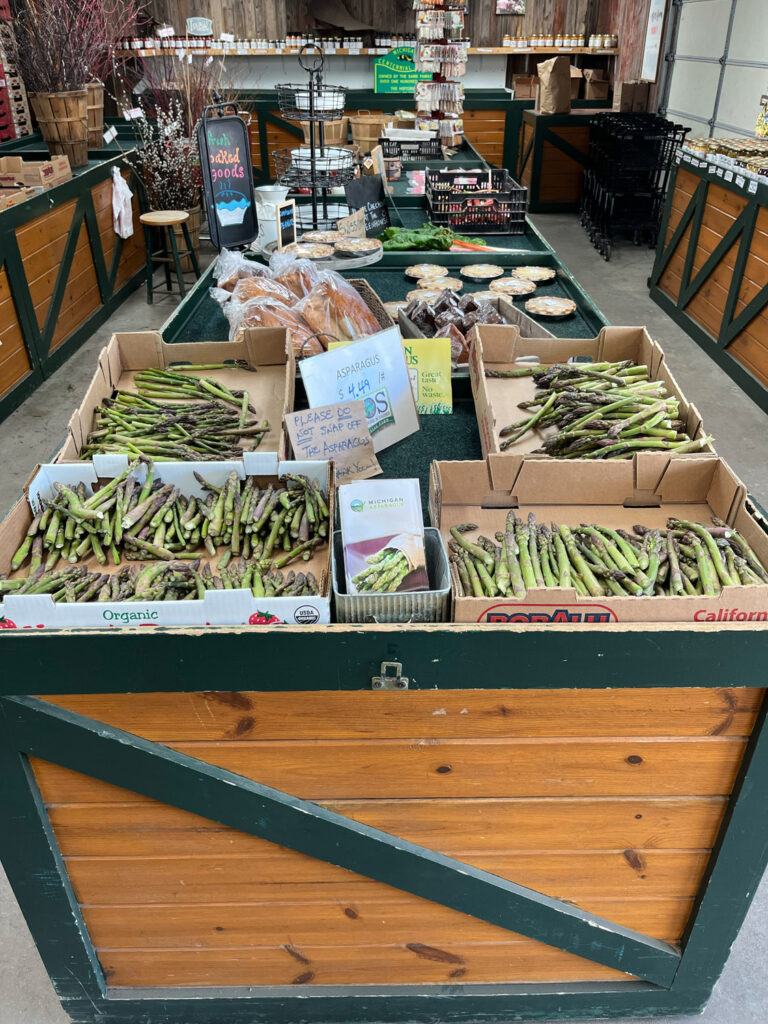
From mid-May to late June, the asparagus farms and fields from Oceana and around the state will be continuously handpicked stalk by stalk.
The enjoyment won’t end there. The budding green stalks of spring will turn into a flowering giant after the summer’s harvest, only to mature into a beautiful contrast of golden yellow against the rich reds, oranges, and browns of the fall leaves. Asparagus is a crop to be enjoyed year-round.
Even when the plant turns brown at the end of its life cycle, it is not to be cut. The brown fern contains all of the nutrients the plant needs to produce new spears in the spring.
I called up Bill Bos Jr. of Bos Greenhouse and Farms, a family-run farm in Grand Rapids for over 100 years, to give me a quick rundown on this nutritional staple.

Bos’s patch is already producing, and happy faces circle the few boxes of fresh stalks in his produce stand. He shows me the short stalks that have been picked early. He sorts them out by size and has found that quite a few people enjoy the little guys, even when there’s larger options.
Asparagus is a perennial plant, taking around five years to harvest from seeds.
While Bos’s family farm has asparagus on the way, he said South Haven and Oceana are hotspots for these green stalks due to the sandy soil.
Nearly 10,000 acres of it thrive up there, with a few of those even belonging to a cousin of his, at the Ooman Brothers Farm, Bos said.

I made a call to Nick Ooman, who chatted with me as he worked in the field.
Ooman let me know about the harvesting technique used in Michigan. Asparagus is handpicked here, with workers sitting on tractors in carts low to the ground to snap off the spears at their desired length.
This technique is specific to Michigan and is actually less laborious than the European way, which uses a knife to cut below the soil. Knife-cut asparagus often has fibrous plant material on it the consumer then has to cut and toss, leading to more plant waste.
For 10-15 years, asparagus can be reharvested before a crop rotation to enrich the soil. For about six weeks of each year, Ooman says he can expect to pick the stalks 15 times before they begin to fern. In the warmer months, asparagus can grow inches in one afternoon, requiring daily—or twice a day—picking.
The biggest challenge for this crop is labor cost and foreign competition due to lower labor costs in other countries. Ooman pays $20 an hour. In Mexico, workers can expect $10 or less a day.
But both products retail for the same price at the market, making it hard for local legacy farmers like the Oomans.
It’s laborious, but well worth it.
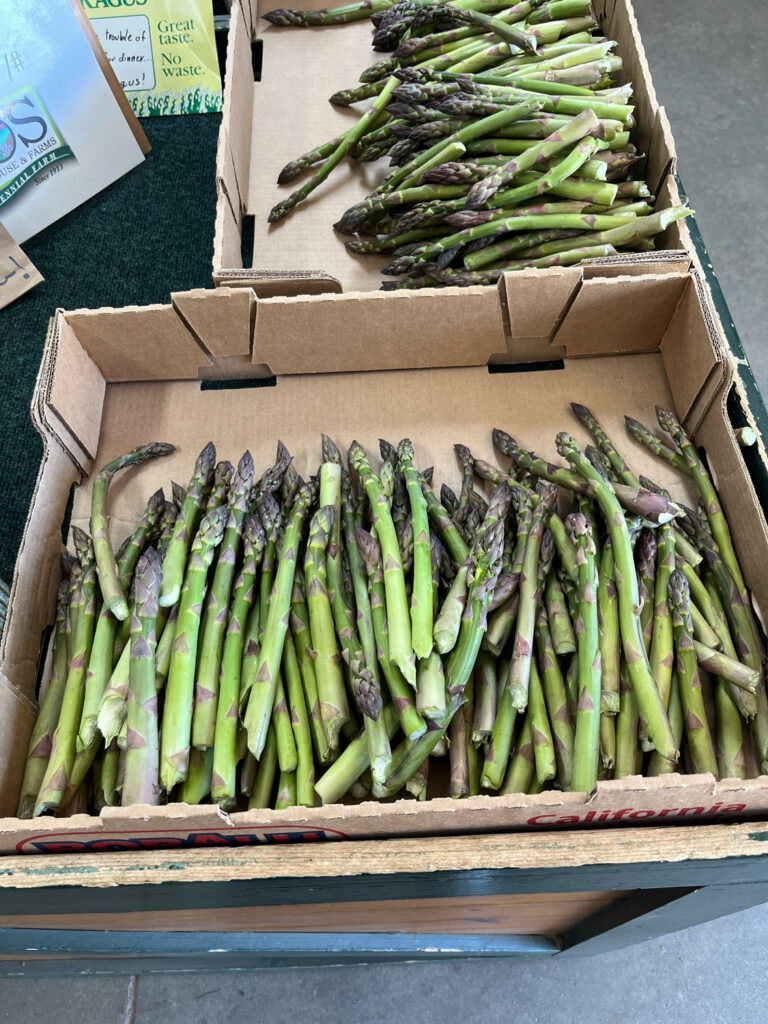
Similar to paw paws, another seasonal Michigan fruit, asparagus has to be preserved or consumed within three days of harvest before it loses its quality. Look for firm stalks to ensure proper taste and nutritional value.
Half of Michigan’s harvest is processed into cans, pickled or frozen, with the other half enjoyed fresh, for sale in markets or left for those seeking a U-Pick option.
Food program managers at local schools or other institutions can also purchase this asparagus directly from the farm or distributor.
Oceana may be the Asparagus Capital of the World, but it’s not Michigan’s only asparagus festival. Given that May is Asparagus month, there are a few more asparagus festivals across the state to enjoy, from Grand Rapids to Empire. Having just learned you can eat asparagus raw, I’ll be first in line.
Cultivated thousands of years ago in Greece, then beloved by the Romans who spread it through their conquests, asparagus has been widely described and favored for its medicinal benefits. Native Americans also cultivated much of Michigan’s asparagus.
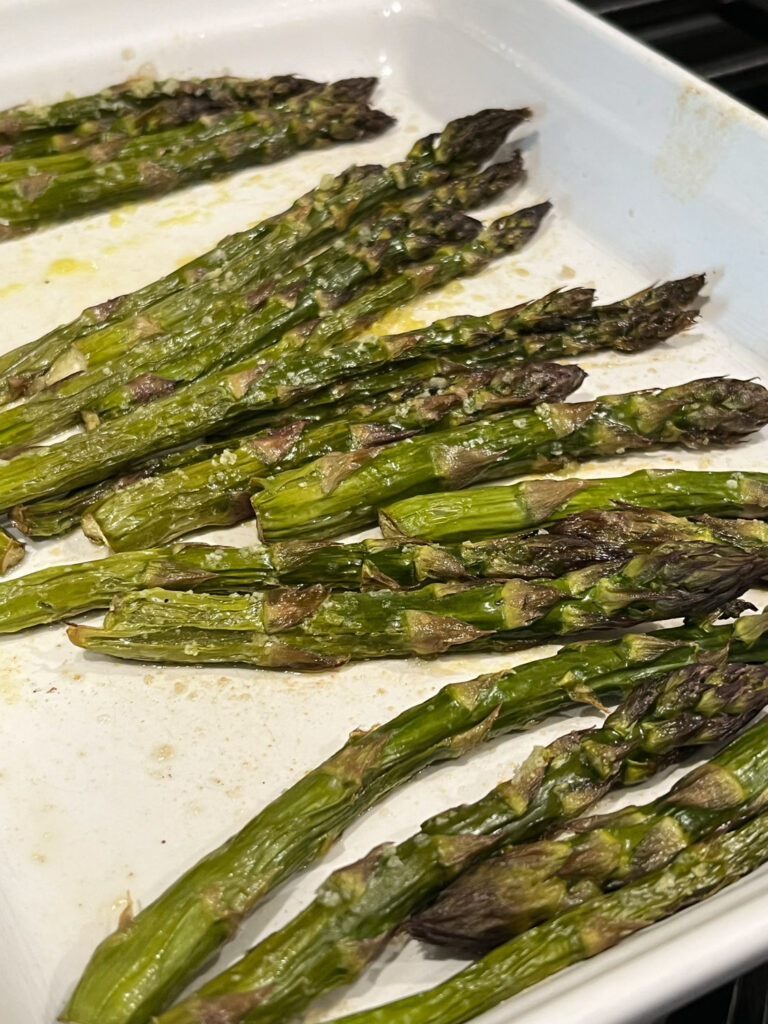
Full of fiber, folate, vitamins A, C, E, and K, as well as chromium, both cultivated and wild asparagus can be found throughout the state of Michigan.
My family grows beans and corn, so during my last visit, I inquired about the sweet stalks missing from our fields.
“When I was a kid, you’d get your asparagus from the ditch,” my grandfather said over dinner. “Of course, you can’t do that now.”
“Why?” I asked, hope still in my eyes.
My grandmother answered this one, “Everything they spray on the fields. It runs off and just sits in the ditch.”
Maybe Michigan’s Asparagus Advisory Board can take a look at that one.
Devinn Dakohta is a contributing writer for Michigan Enjoyer. Follow her on Instagram @Devinn.Dakohta and X @DevinnDakohta.
